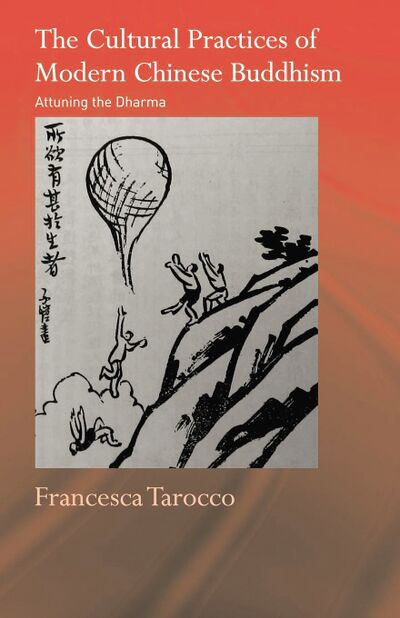|
|
| Line 1: |
Line 1: |
| {{Book | | {{Book |
| |FullTextRead=No | | |FullTextRead=No |
| |BookToc=Introduction: Modern Buddhist Cultures Part 1: The Cultural Practices of Buddhist Modernity | | |BookToc=**{{i|''List of figures''|ix}} |
| 1.1 Shanghai Buddhism
| | **{{i|''Acknowledgements''|xi}} |
| 1.2 Vegetarian Identities
| |
| 1.3 The Esoteric Fever
| |
| 1.4 Printing the Dharma
| |
| 1.5 Continuities and Discontinuities
| |
| 1.6 Buddhist Canons
| |
| 1.7 Yang Wenhui
| |
| 1.8 Awakening the Faith
| |
| 1.9 Buddhist Books beyond China
| |
| 1.10 Shanghai Publishers
| |
| 1.11 The Romantic Buddhism of Su Manshu
| |
| 1.12 Life and Death in Feng Zikai’s Drawings
| |
| 1.13 The Buddhist Periodical Press
| |
| 1.14 Buddhism, Religion and the Nation
| |
| 1.15 Images of Modern Buddhism
| |
|
| |
|
| Part 2: The Sound of Modern Buddhism | | *{{i|'''Introduction: modern Buddhist cultures'''|'''1'''}} |
| 2.1 Introduction | | *'''Part 1''' |
| 2.2 Li Shutong: From Shanghai to Tokyo, and Back
| | *{{i|'''The cultural practices of Buddhist modernity'''|'''25'''}} |
| 2.3 Songs of Nationalism | | *{{i|1.1 Shanghai Buddhism|27}} |
| 2.4 The Power of Songs | | *{{i|1.2 Vegetarian identities|31}} |
| 2.5 Hymns, Anthems and Songs | | *{{i|1.3 The esoteric fever|39}} |
| 2.6 Songs of Modernity | | *{{i|1.4 Printing the dharma|41}} |
| 2.7 Li Shutong ‘Leaves Home’ | | *{{i|1.5 Continuities and discontinuities|46}} |
| 2.8 Buddhist Songs | | *{{i|1.6 Buddhist canons|49}} |
| 2.9 Buddhist Musical Ties
| | *{{i|1.7 Yang Wenhui|51}} |
| 2.10 Continuities and Discontinuities
| | *{{i|1.8 Awakening the Faith|53}} |
| 2.11 ‘Scientific Gadgets’: Buddhist Radio and Phonograph Recordings | | *{{i|1.9 Buddhist books beyond China|56}} |
| 2.12 Buddhist Songs in the Digital Age | | *{{i|1.10 Shanghai Buddhist publishers and writers|59}} |
| | *{{i|1.11 The Sanskrit Buddhism of Su Manshu|66}} |
| | *{{i|1.12 Life and death in Feng Zikai’s drawings|71}} |
| | *{{i|1.13 The Buddhist periodical press|75}} |
| | *{{i|1.14 Buddhism, religion and the nation|81}} |
| | *{{i|1.15 Images of modern Buddhism|85}} |
| | |
| | *'''Part 2''' |
| | *{{i|'''The Sound of Modern Buddhism'''|'''97'''}} |
| | *{{i|2.1 Li Shutong: From Shanghai to Tokyo, and back|99}} |
| | *{{i|2.2 Li Shutong leaves home|101}} |
| | *{{i|2.3 Songs of nationalism|105}} |
| | *{{i|2.4 The power of song|107}} |
| | *{{i|2.5 Hymns, anthems and songs|109}} |
| | *{{i|2.6 Songs of modernity|113}} |
| | *{{i|2.7 Buddhist songs|116}} |
| | *{{i|2.8 Continuities and discontinuities|123}} |
| | *{{i|2.9 Scientific gadgets: Buddhist radio and phonograph recordings|128}} |
| | *{{i|2.10 Buddhist songs in the digital age|130}} |
| | |
| | **{{i|''References''|146}} |
| | **{{i|''Glossary''|172}} |
| | **{{i|''Index''|177}} |
| |AddRelatedTab=No | | |AddRelatedTab=No |
| }} | | }} |

